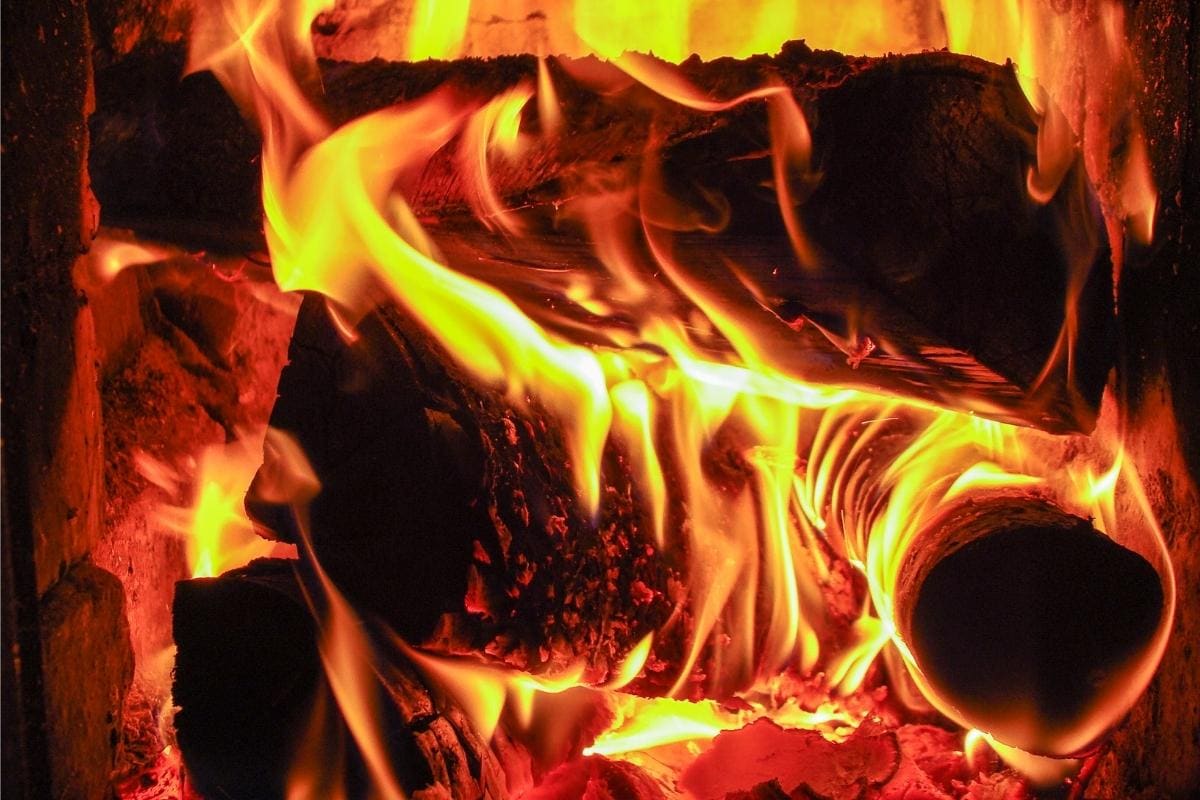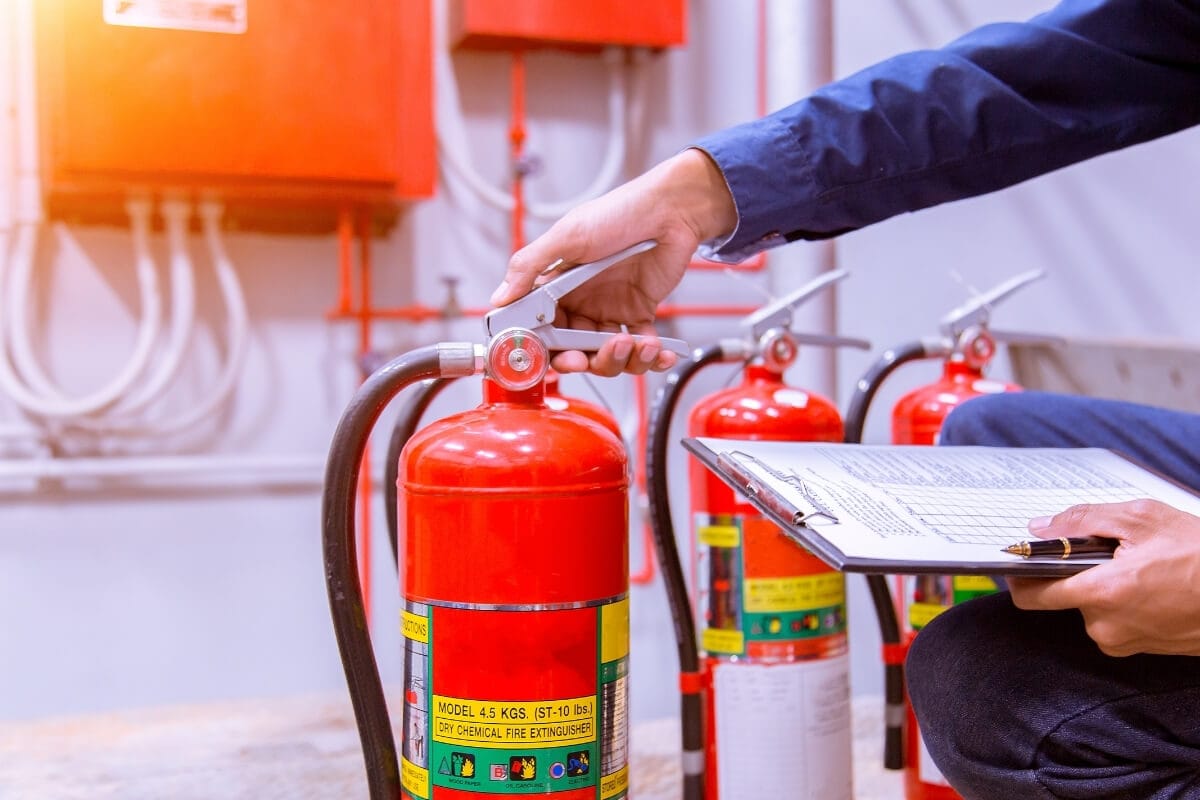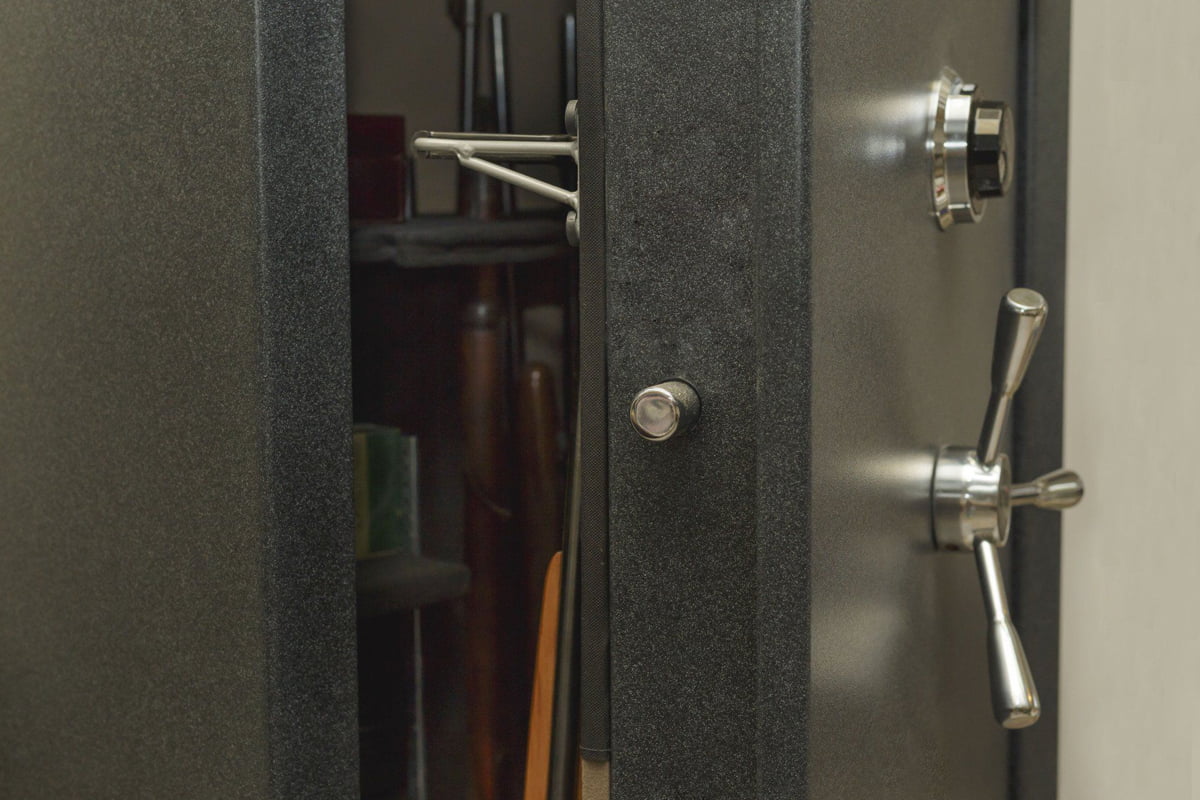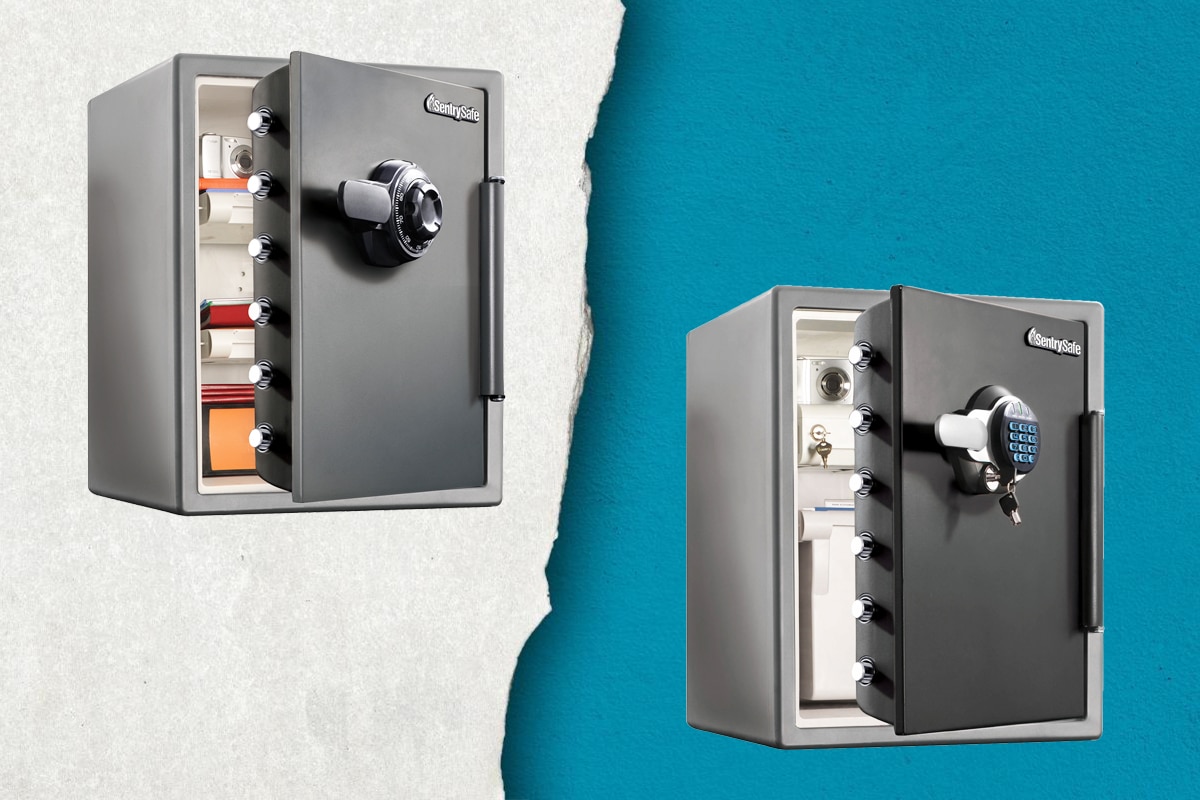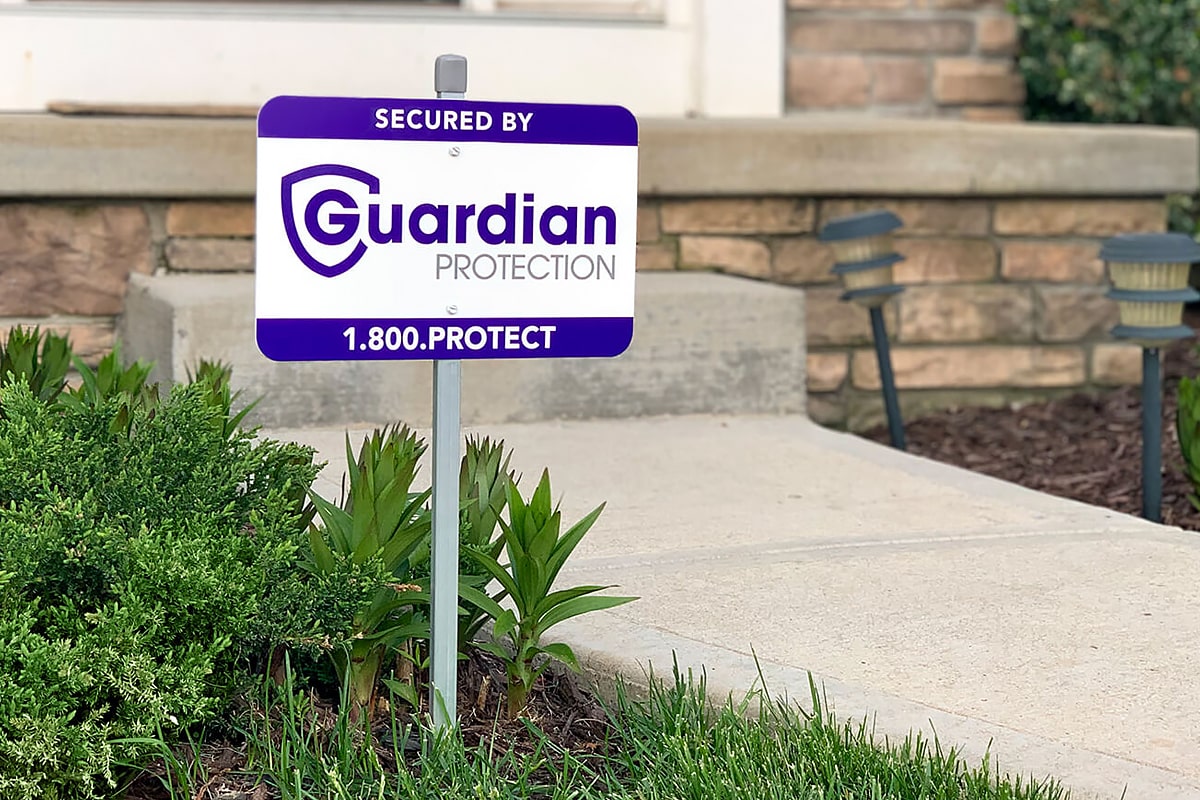Take a close look at a range of products and you might see something on the outside labeled: Underwriters’ Laboratory or UL.
But, an underwriter is someone who financially guarantees insurance, no? What does that have to do with the smoke alarm, fire extinguisher, safe, or a hundred other products in your home?
There’s more to the story than just a misunderstood word.
Underwriters Laboratory – Who, What, When, and Why
Underwriters’ Laboratory actually started as a company in 1894. From the first, their mission was to provide testing and certification for products that can present or prevent hazards.
One of their first efforts was to examine and validate a fire extinguisher. That followed right on the heels of publishing a standard for fire-safe doors. That tradition and testing process has continued right on down to today.
Those efforts all led in a short time to a standard list of UL ratings. They encompass all sorts of products and activities. Our interest here is in home safes and gun safes, but even there the ratings cover multiple categories, chiefly protection against burglary, fire, and flood.
Once you’ve decided you need the protection provided by a safe, the logical question to ask is: what constitutes protection? Next, one asks “how much?” There, we start to see how Underwriters’ Laboratory and its rating scheme can be of interest to a consumer, not just the companies they directly do business with.
One of the key ways UL can tell you how safe is the safe you’re considering to store your valuables in is their fire rating system. That system will help you figure out which safe is best for you. Then you can hone in on the particulars of size, weight, and other more obvious factors.
That is, few safes will protect your goods against anything and everything under all conditions for unlimited time. Some fires burn hotter than others. Some burn longer. You may save money by getting one that will protect your goods for an hour in an ordinary home fire. A more expensive model might be required to prevent damaging a computer storage device subjected to a 4-alarm blaze that might burn for half a day.
Keep in mind, no matter how thick the walls on a safe might be, they’re either plastic or metal, usually separated by some material such as concrete or fireboard. When they heat up, the heat gets transferred to the interior just the way a metal pan conducts heat to food on a stove, even if more slowly.
Keep in mind, too, that more than just fire can damage storage media and other valuables. Water can be equally destructive. Neighborhood-wide flooding is a frequent risk in certain locations. Even something as ordinary as a leaking toilet or tub in the bathroom – if situated above your home office – can damage paper or electronics.
And, when there is a fire, it might be extinguished by your garden hose or a fireman’s hose or, in a small office, by a sprinkler system. About 95% of fires are extinguished by one or the other. Also, many times a flood and fire can happen together, as floods knock down utility poles.
Even a fire-resistant safe may or may not be well sealed against water. It depends on the design. Judge the risk and your goals for both criteria.
Temperature Ratings
Safes are often rated for the type of media they protect and how well. A “media safe” model is intended to store paper or computer storage media of different kinds and more. Add in whether you need to protect jewelry – and what type (pearls, for example, are more sensitive to heat than silver) – cameras, old photo negatives, and other valuables. Then narrow the choice of safe accordingly.
For example, if you want to protect paper documents – I still have bonds, a home deed, and other valuable pieces; you might, too – you’ll need something that’s “only” UL Class 350 rated.
If you’re interested in securing against damage to a thumb drive, a spare hard drive you used to archive important data or other electronic devices, you’ll need something better. It turns out that, while their materials are physically more robust, the devices are more sensitive to heat than paper. Here, a UL Class 125 rated safe is a must.
But what do those numbers mean? Paradoxically, they’re ‘in reverse’ in a way. That is, a higher number actually provides less protection. That’s because the number designates how hot the safe’s interior gets. It specifies the degree to which the internal temperature of the safe rises as external heat is applied under standard testing conditions.
UL, and many other rating agencies, will take a new model “fire-resistant” safe and put it in a large oven for testing. They place specialized temperature and humidity recording instruments inside and then close the door. Then they turn the oven up to 1500 °F, 1800 °F, or even 2000 °F. They continually monitor the temperature of the enclosure and how long it takes to reach a certain point.
If after, say, an hour the temperature reaches “only” 125 °F, then the safe is rated UL 125. If it goes up as high as 350 °F, it receives a UL 350 rating.
That larger number is chosen as a target by many manufacturers because paper “auto-ignites” (i.e., burns without being directly touched by flame) at between roughly 425 – 450 °F. The number varies a lot depending on the paper’s composition, density, shape, and more. Choosing 350 °F as a “top” temperature provides a large safety margin for your documents.
By contrast, USB drives and other electronic-bearing gadgets won’t melt or actually burn at 125 °F, but they tend to stop functioning properly. The device, if placed into a computer, can misbehave. In some cases, even if you use a specialized firm to get around the device’s dysfunctional electronics, the data on a hard drive’s storage platters can be partly or wholly lost due to heat damage.
Time Ratings
Temperature isn’t the only variable that determines whether your documents – paper or electronically stored – get damaged. It also depends on how long the object is exposed to that temperature. That’s why there’s another number often associated with a media safe.
That other number signals how long your material will stay safe under those conditions. Heat takes time to transfer; the more time that passes, the more heat inside. If, for instance, a hot fire takes four hours to extinguish, your goods are at a lot more risk than if the blaze is put out in an hour.
The number range typically runs from 30 minutes to 4 hours. For that reason, you’ll often see a UL rating with an additional time tag, such as 1-Hour and 2-Hour.
Caveats
Numbers aside, whenever you examine the specs for a media safe or “fire safe” file cabinet, know there is a difference between “fireproof” and “fire-resistant”. Manufacturers aren’t trying to fool you with marketing terms here. They’re providing information.
“Fire-resistant safes” are the recognized category by UL because – as they learned through testing – no safe is actually fully “fireproof”. At a certain temperature, given enough time, any safe will ultimately fail to protect what’s inside. It’s a matter of degree – both in temperature and time.
Know also, simply being stamped “UL Tested” is not enough even to guarantee good fire resistance. A product must actually pass the test. It should seem obvious, but most people assume if a product has been tested it has qualified. Not so. Be careful interpreting marketing jargon.
Who Cares
Buyers have a need to know under what circumstances their important media are at risk. You buy a safe in order to, as the name suggests, keep some things safe.
One big motivator is the fear of theft, for sure. But many people live in low-crime areas or aren’t particularly worried about burglaries. Few of us will bother to install a home security system. Some, rightly in the case of documents, figure that what we have isn’t worth stealing.
Even so, there are many things we want to keep intact: mortgage deeds, gold, jewelry, spare thumb drives or hard drives, and other valuables. Even sentimental items, those that may be worth little money like old family photo negatives, are often more precious as those other things. All of them can disappear in hours from a fire or flood.
Even if we don’t personally care that much, insurance companies often do. When you protect certain items in a rated safe, it can help lower your rates on the homeowner’s policies that cover them.
As safe as our homes are today compared to our grandparents’ day, there are still real risks. And, as much as our lives have moved to the virtual world – bank records, tax returns, baby photos, and much else – we still own plenty of irreplaceable physical items. A fire-resistant and waterproof safe is one of the most cost-effective ways to protect them from loss or damage.
Final Notes
One more thing. Be sure to look closely to see whether the product actually has a UL rating or ETL (Edison Testing Laboratory) rating, or whether it has only been “tested by an independent lab”. In the latter case, you have no way to know how good the lab is. UL and ETL have earned their reputations over decades.
These days UL has plenty of good competition, though. If you’re investigating fire resistant safes you might find numbers and initials from other certification companies than Underwriters’ Laboratory.
Korean-made safes are often tested according to KIS (Korean Industrial Standards). Ones from Europe will typically carry their own certification, which can vary from country to country.
Aside from national ratings, even in the U.S. there are dozens of ratings companies, some large, some miniscule. In one way or another, though, they all use very much the same style of tests and – at bottom – their numbers will come down to the standards established by the granddaddy who established them all: UL.
Look before you buy.

